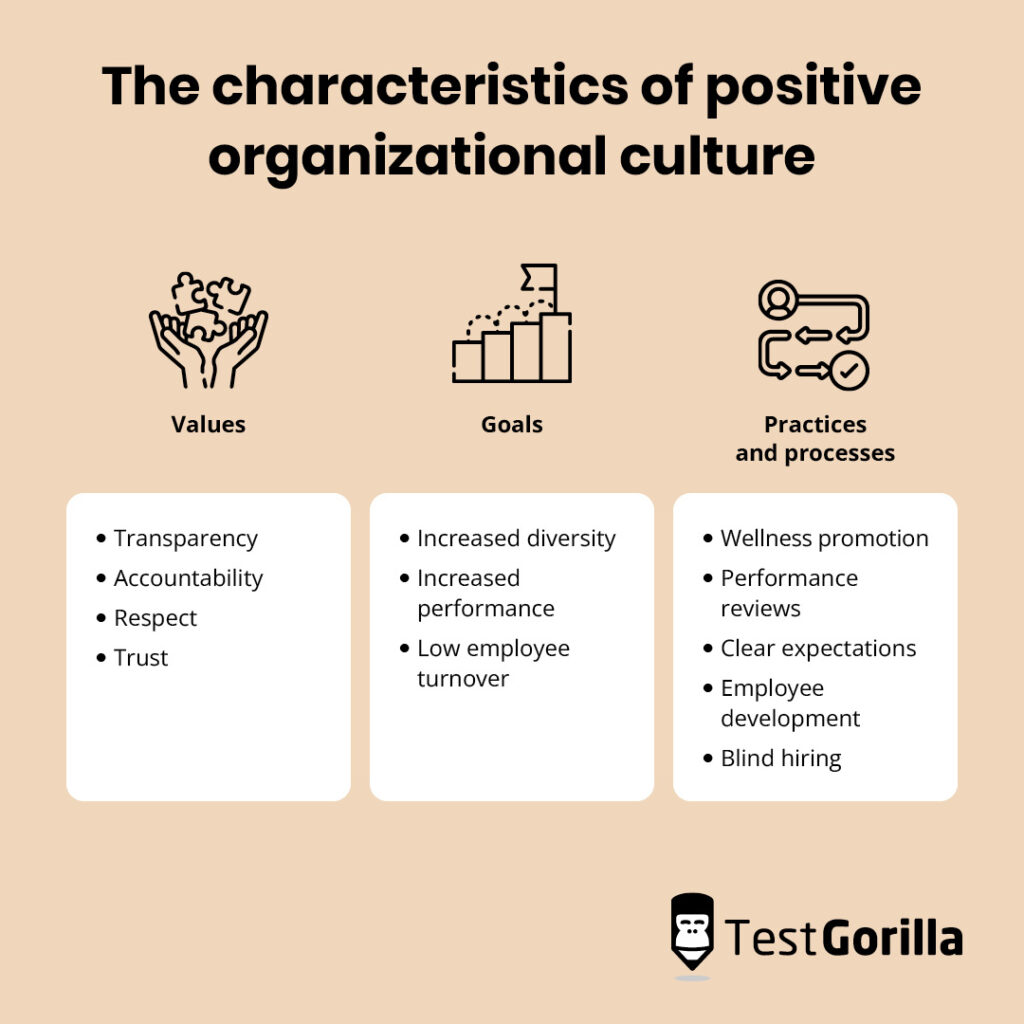Organizational culture change is a common phenomenon across industries worldwide. In part, this is driven by companies changing their norms and values to explore modernized work environments or altering their trajectory towards better objectives.
Culture change has little direct effect on a company’s revenue and growth, but it can positively influence behaviors and actions, ultimately resulting in bigger profits. For example, employees are likely to become more collaborative if they feel supported and empowered in a new working culture.
Therefore, it may be profitable to promote positive cultural change in your company. In this article, we’ll explain what workplace cultural change means and why it can be so important, explore its characteristics, and discuss three cultural change examples.
We’ll also introduce our Culture Add test, which helps you identify and hire candidates who will promote a positive culture change in your organization.
Table of contents
What does cultural change in an organization mean?
Based on professional context, cultural change is a process of modifying a company’s goals, values, practices, and processes to alter its work environment. Culture add and change are increasingly popular in today’s world as they are useful for creating positive workspaces for creativity and innovation.
In a 2019 Return on Culture study, Grant Thornton LLP partnered with Oxford Economics to identify correlations between a company’s culture and its financial performance.
They discovered that a company with a healthy culture is 1.5 times more likely to enjoy a 15% revenue increase in three years. Similarly, they showed that positive company culture can improve staff satisfaction and decrease employee turnover.
A successful cultural change initiative must be gradual and sustainable so that employees can adjust to the change without becoming disengaged. Committed staff who see the impact of their work are more likely to be satisfied in their roles and perform effectively.
Why are culture changes in the workplace important?
A company can undergo a culture change for several reasons, most of which ultimately contribute to the company’s growth. Below are several reasons why undergoing a culture change in your company may help your business:
To improve employees’ morale: Creating a positive culture in your company can increase motivation, loyalty, and engagement. It can also resolve workplace disputes more effectively.
To improve productivity: Providing a new work environment that is more rewarding and nurturing can help improve productivity among all members of staff.
To reduce overall stress levels: If you alter your company culture to be more interactive or forgiving of mistakes, employees will feel more comfortable when carrying out their tasks. This process similarly reduces the pressures on management.
To maintain a good business reputation: A positive and interesting work environment will help you establish a strong business reputation that’ll increase interest in job vacancies at the company and help build fruitful professional relationships.
What are the characteristics of positive organizational culture?
Here are some elements of a good organizational culture that can help your company reach new milestones and improve prospects:
Values
Organizations can reveal their commitment to positive company culture through the values they uphold. Below are some of the values that promote a thriving company culture:
Transparency: A company can ensure a positive culture change by remaining transparent with employees about its performance, initiatives, and agenda.
Accountability: A company that emphasizes accountability is sure to have an effective work environment as management and employees carry out their duties as expected.
Respect: A company that values mutual respect, regardless of an individual’s role in the company hierarchy, will promote a conducive and enjoyable work environment in which junior employees feel appreciated.
Trust: A work environment that encourages trust, honesty, and integrity among staff members at all levels will improve job satisfaction and effective teamwork.
Goals
Organizations can achieve a positive company culture if their goals correlate with their values. Below are three goals that contribute toward a positive culture:
Increased diversity: Taking effective actions to improve diversity will help your company create a welcoming and inclusive corporate atmosphere.
Increased performance: Setting a target for high performance in your company can positively influence employee engagement and the company’s bottom line.
Low employee turnover: Any company that wants to reduce staff turnover and reduce costs associated with new recruitment should aim to improve employee satisfaction.
Practices and processes
Finally, organizations with a positive company culture have workflows, practices, and processes that reflect that culture. Below are five examples of such practices:
Wellness promotion: A company that promotes wellness can improve employee satisfaction and create a healthier work environment. Examples you can implement include flexible work schedules and employee engagement programs.
Performance reviews: Engaging in regular performance reviews and employee recognition for excellent work enables a company to recognize the value of its staff.
Clear expectations: Your company can ensure a positive company culture by providing clear expectations of their new and existing employees regarding work processes. You can use a 30-day, 60-day, and 90-day review system for this purpose.
Employee development: Your company should provide growth and development programs to improve employee morale and reduce staff turnover. For example, you can display positive organizational culture by offering tuition reimbursement plans.
Blind hiring: This process helps to disregard any job candidate’s personal information that could influence or create a bias during a hiring process. Blind hiring can help you improve your company’s diversity and reflect a positive culture.
3 culture change examples your workplace can emulate
As noted earlier, many companies around the world have engaged in organizational culture change and reaped positive impacts from doing so.
Below are some of the most reputable companies to undergo such a culture change that has permanently improved their work environment:
Southwest Airlines
Southwest Airlines is an excellent example of organizational culture change implemented effectively. The company started about 50 years ago and managed to compete against older, bigger, and more established airlines mostly because of its top-tier company culture.
The core of Southwest’s culture is that their employees, rather than their customers, come first. Southwest defends this by arguing that happy employees ultimately result in high customer satisfaction and increased earnings.
It’s an unusual method to approach customer service, especially in a customer-centered industry like air travel. On its culture page, the company outlined six key cultural values as a guide for how employees can work and live “the Southwest way.”
While establishing these cultural values, Southwest aims to promote leadership across all company levels. This, alongside other employee benefits and special occasions, has made Southwest a desirable workplace.
HubSpot
HubSpot approaches its company culture just as it would a product. As such, it is frequently refining its culture and improving the employee experience. In this regard, HubSpot created a 128-slide presentation, which it called the Culture Code.
The Culture Code contains the company’s values, decision-making processes, and performance management. HubSpot also focuses on employee development by providing free classes, books, TED talks, and other development programs to upskill talent.
HubSpot has various distinct features, but the following line from their Culture Code illustrates its general approach: “Whether you like it or not, you’re going to have a culture. Why not make it one you love?”
Dynamism
Dynamism was a company with a bureaucratic work environment and outdated policies and processes until the business started to notice a decline in productivity. To tackle this, they began to modify their control systems by integrating cross-functional and semi-independent departments.
As departmental teams acted creatively, with discretion, and without policy restrictions, the company started enjoying a more innovative and productive work environment.
How can TestGorilla help you promote positive culture change?
Culture change isn’t a process that only involves employers, as it equally affects employees. As such, you must hire individuals aligned with your values and who can help implement future changes as culture advocates or members of a culture committee.
You can use TestGorilla’s pre-employment assessments to evaluate how well your candidates suit your culture change needs and how their values correlate with your company values.
Our personality tests help you identify candidates’ behavior and work attitudes. Culture change may require time and resources, but a credible and affordable platform like TestGorilla will make all the difference.
Register with TestGorilla today to begin hiring the most suitable candidates.
Related posts
Hire the best candidates with TestGorilla
Create pre-employment assessments in minutes to screen candidates, save time, and hire the best talent.
Latest posts
The best advice in pre-employment testing, in your inbox.
No spam. Unsubscribe at any time.

Hire the best. No bias. No stress.
Our screening tests identify the best candidates and make your hiring decisions faster, easier, and bias-free.
Free resources
This checklist covers key features you should look for when choosing a skills testing platform
This resource will help you develop an onboarding checklist for new hires.
How to assess your candidates' attention to detail.
Learn how to get human resources certified through HRCI or SHRM.
Learn how you can improve the level of talent at your company.
Learn how CapitalT reduced hiring bias with online skills assessments.
Learn how to make the resume process more efficient and more effective.
Improve your hiring strategy with these 7 critical recruitment metrics.
Learn how Sukhi decreased time spent reviewing resumes by 83%!
Hire more efficiently with these hacks that 99% of recruiters aren't using.
Make a business case for diversity and inclusion initiatives with this data.




















